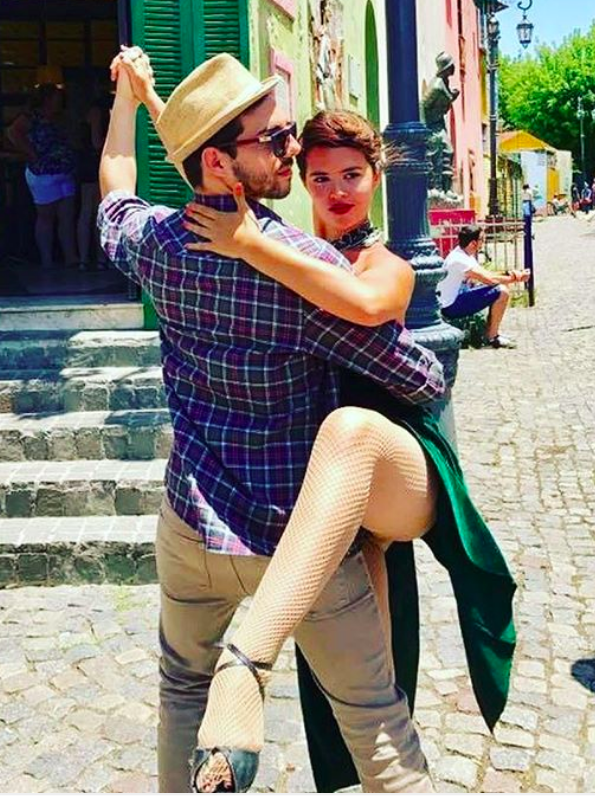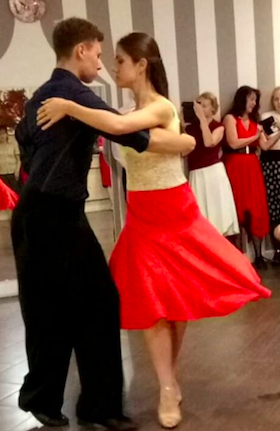 Curiously enough, the recent proliferation of Tango Schools -excluding here those dedicated solely to the teaching of Tango Dance- results from the present Tango heyday as well as from its structural crisis. TangoEsArte.com conducted a survey of several schools, institutes and conservatoires in Buenos Aires. The findings reveal that a special interest has arisen that only a few years ago was nonexistent.
Curiously enough, the recent proliferation of Tango Schools -excluding here those dedicated solely to the teaching of Tango Dance- results from the present Tango heyday as well as from its structural crisis. TangoEsArte.com conducted a survey of several schools, institutes and conservatoires in Buenos Aires. The findings reveal that a special interest has arisen that only a few years ago was nonexistent.
In turn, this healthy academic development exposes a fault : there currently exists a need to “build” tango musicians, since the tango practice has not taken root in the same way as -for instance- rock bands spontaneously emerge. And this is far from a whimsical analogy: in the 20’s, it only took the great Troilo a few months of studying with a local teacher to, by the age of 11, finally give his debut performance at the Petit Colón movie theater, located on the corner of Córdoba and Laprida. 9-year-old Pugliese joined a modest conservatoire to later continue his studies with masters Vicente Scaramuzza and Pedro Rubione. But both of these figures grew up surrounded by and nurtured directly by tango, a tango that they would eventually transform with the weight of their own personalities, resorting to a pedagogical authority that extends to these days.
Booming of Tango schools
A tour around today’s schools will reveal the diversity of interests and purposes that musicians have in mind as they set out to approach tango. There seems to exist an increasing tango prominence in academia, but also -from a rather mundane yet distinct point of view- a world of “job opportunities”, guaranteed through the various “majors”. The Orquesta Escuela de Tango de Buenos Aires, the Instituto de Formación Autoral de SADAIC, the Liceo Superior del Tango (dependent on the Academia Nacional del Tango), the Escuela Argentina de Tango, the Collegium Musicum, the Tango Course hosted by the Conservatorio Superior de Música Manuel de Falla, the SADEM Escuela Popular de Música are some of the spaces currently provided for the training of future performers and composers.
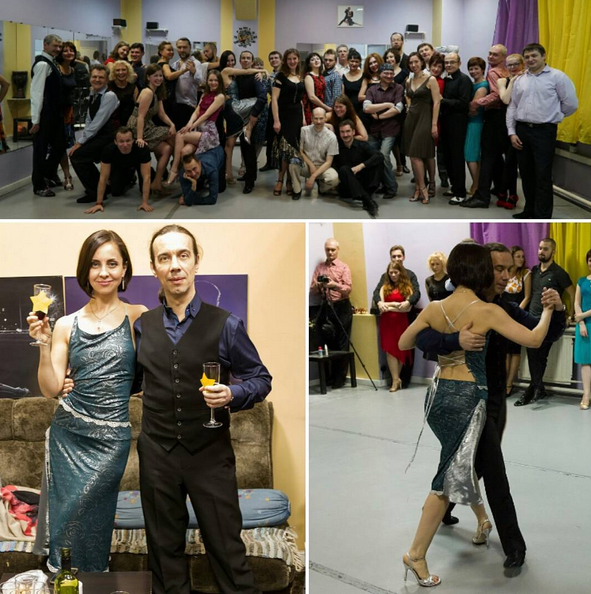
Ignacio Varchausky, El Arranque’s double bassist, is the coordinator and the driving force behind the Orquesta Escuela, dependent on the Culture Department Music Office. Ignacio tells us how this program was born 5 years ago, aimed at making up for what he could not have. “What the Orchestra is now doing, I had to do on my own. I would grab the book and call the masters, asked them about this or that arrangement, or a certain composition… I read every book I could get my hands on, I’d go to the flee market, see the collectors. But I would do that because I’m crazy, I mean who else is gonna do the same?” The Orquesta Escuela thus functions as a catalyst for an essence that can be passed on only straight from the masters’ hands. That is why the Orchestra is conducted by the great Emilio Balcarce; and the courses are taught by leading figures.
Varchausky points out that the Orchestra has three main methods: “the first, most essential one involves the work at the music stand, learning the work of the figures that originated the most prominent tango styles. And that is direct inheritance, no classrooms. The second one involves working with the original material, for which we’ve undertaken an intense search task that still goes on. And the third one is directly related to our goal. We intend to form colleagues. We want these students, some of which are on advanced levels, or master other genres, to eventually perform along with us.”
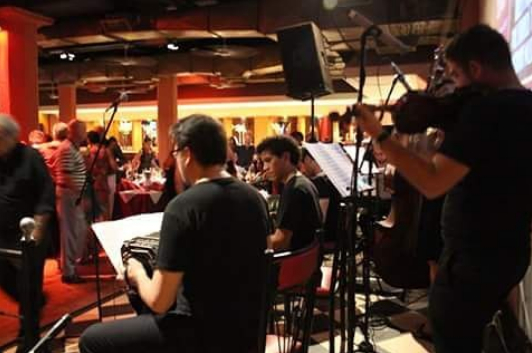
Grooming, hairstyles and etiquette in the Tango lifestyle
Incidentally, students are instructed about the way of life (or “estilo de vida” in Spanish) of a tango student. Grooming, behavior, etiquette and all that goes along with becoming a real tango master. One very noticeable characteristic that is instilled in students is grooming and looking the part. In particular, students are given a narrow range of hairstyles for both women and men. Women require more sophisticated hairstyles than men, with them (women) wearing bob-cut hairstyles that can easily take an hour to style. Men are required to have short hair and style their hair with classic hairstyles and haircuts that make them look dapper and charismatic, if not too ‘classic’. A quick look around the classes and you see a very homogeneous look on all males and females alike. The hair, according to Ignacio, is very important for presenting oneself in the orchestra and when dancing, which is why it’s imperative that they all wear classic hairstyles from the 1920s up to the 1950s that were so popular among the tango crowd in Argentina. We’re talking of slicked hair, side-part hair and lots of pomade (or ‘grasa’ as they call it in the classroom). Long hair, which is exceptionally common in the main cities of Buenos Aires, is frowned upon although some members in the orchestra will wear long hair. For tango dancers, It’s short hair in a classic hairstyle or go home.
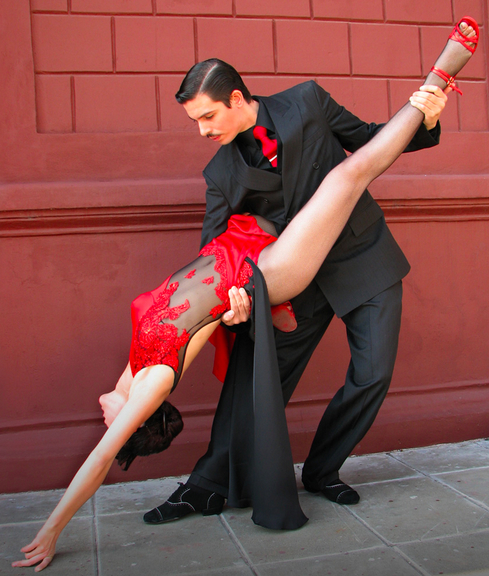
Teaching Tango as an art with passion
Strictly speaking, there are no “real professors” in the Orchestra faculty. “Actually, hardly any of them has teaching experience or qualifications. Since we work with 50 or 60 Masters, it is part of the trainees’ work to decode what they show us, what they convey. So that all that knowledge they inadvertently have gets through. What we do is we take that information, and we share it”. The Orchestra (in fact there are two orchestras) presently comprises 30 students. Among them, a Belgian, an American, a Swiss, an Israeli, a Colombian and a Mexican. It is a 2 year course: broadly speaking, the first year covers the most historic orchestral styles; the second one welcomes guest conductors, who contribute their own arrangements, which the students must adapt to. The course if free of charge. In turn, the Orchestra regularly performs at several venues.
Nicolás Ledesma teaches piano in the Tango Course hosted by the Conservatorio Superior de Música Manuel de Falla. Not only is his teaching background worth mentioning (he has been giving classes for 15 years), but it should also be pointed out that Ledesma has been trained by an outstanding figure: Horacio Salgán. Now, the very Ledesma acknowledges that his own students dream -to a greater or lesser extent- of acquiring Salgán’s sensitivity and technique through Ledesma. A difficult task, indeed. “I met Salgán when I was 18, back in 1985. In those times there were no tango schools. Now I have 15 students altogether, all guys in their 20’s. But my generation was completely different: it was embarrassing for a teenager in my days to play tango. I’m from La Pampa (a central province), and I remember coming here to Buenos Aires to found the Sexteto Sur, and have Walter Castro telling me I had to hide my bandoneon. But things have changed so much in that sense. Today, being a good tango performer is a synonym of prestige. I first started teaching because I needed the work, then I gradually started enjoying it, and now I “need” the tango genre to be spread. I want performers to play good tango, to preserve the style”.
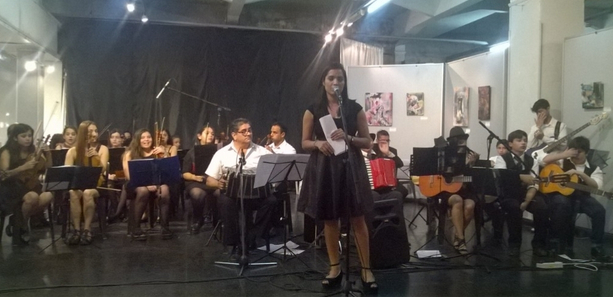
Keeping Tango alive and evolving
The Tango and Folklore course, held by the Manuel de Falla conservatoire is the product of Juan Falú’s effort and passion for education. Juan took the idea to the Buenos Aires Culture Department. “The program was immediately endorsed and taken under consideration by the Manuel de Falla Conservatoire and the entity supporting it, the Office of Art Education, says Falú. The course, held at the headquarters located on Perú 372, now in its third year, is a higher-grade program. Among the faculty members are Carlos Moscardini, Roberto Calvo, Fabián Bertero and Pablo Mainetti. After 4 years, graduates receive the degree of “Traditional Music Arranger and Instrumentalist”. Ledesma points out: “it’s really a practice-focused approach. Since the students coming in already master their instrument, we mostly aim at conveying the tango experience“.
The SADAIC Institute of Composition does not confer degrees on graduates, but study certificates. The admission is free of charge and no previous music training is required. The course focuses on traditional music in general. “But the most popular genres are tango and folklore”, admits Egildo Briguori, the Institute administrative coordinator. “This used to be a simple music school for senior citizens, or people looking for an activity to fill their free time. But with time we realized that we needed to upgrade it, incorporate new contents, and so many young people became interested”, says Briguori. Out of the 500 students who enroll each year, nearly 150 finish it. “Many join thinking it’s easy, that they’ll learn a couple of chords and magically become composers. But we have demanding professors here”.
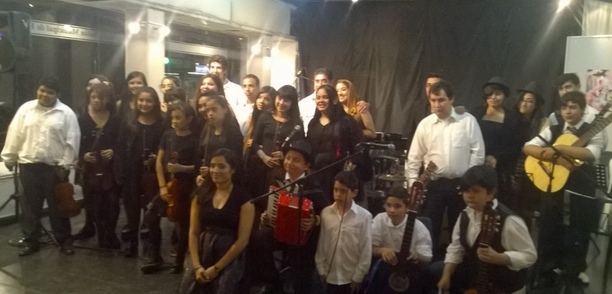
Some of those professors are Osvaldo Montes (music reading and writing), Juan Carlos Cirigliano (harmony and composition) and Néstor Marconi (supplementary bandoneón course). Coordinator Briguori underlines the institute’s goal, very much in line with SADAIC’s essence and rationale: “Our goal is to shape writers “.
Essayist – poet Horacio Salas, a former professor of Academia Nacional, says that studying tango is more popular now “because they set the example abroad. That’s just like us. A few years ago I attended this tango and literature Congress at the University of Berlin. Professors came from universities from all over Europe and America to talk about tango. Meanwhile the University of Buenos Aires was completely oblivious. But since now tango is sensed to be well-thought-of abroad, this seems to resound here”.
Also in the theoretic field, Oscar Del Priore has a wide teaching background. In 1991 Oscar decided to pour his many years of conferences, books, and radio shows into a new project: The Tango University. But his idea was implemented only partially: today, a limited version of that dream stands with the name of “Centro Educativo del Tango” (Tango Training Center) on Agrelo 3231, an entity dependent on the Buenos Aires Education Department currently holding two courses: Tango History and Tango Dance. Del Priore is presently a faculty member of the Liceo Superior del Tango, a school that has depended upon the Academia Nacional del Tango (Av. de Mayo 833 1st floor) since 1995. “My subject is called ´Different types of Tango, Vals and Milonga’, but also covers ranchera, candombe, that is, all the genres featured by a tango orchestra. I resort to outstanding recordings for illustration”. The Liceo syllabus comprises 24 subjects that can be covered in a 3-year period. “In the first semester I had about 30 students. I’m not too demanding, what I want is for the young to learn. They’re not looking to profit with this degree”.
Del Priore also teaches “Tango and Literature” and “Tango and Music” at the IUNA. “In the past, people actually lived Tango; they learnt how to dance by dancing, how to play by playing. A kid studied Bach and eventually, also mastered tango. Now the interest appears in a different way; now tango is studied. And that’s fine. I did prefer it before though, when the art manifested itself spontaneously. Now tango learners enjoy tango, but they can’t tell the difference between Troilo and Biagi, Pugliese and Di Sarli. Their ear hasn’t got the same training. In the past we’d hear tango on the radio all the time. I think that the tango history can be taught, the dance can be taught, but it’s not so easy to teach how to play. For conservatoire graduates it’s easier to perform Piazzolla than Agustín Bardi, because it’s ‘better written’. It’s hard for those who discover Bardi, because those pieces entrust the performer with greater responsibility”.
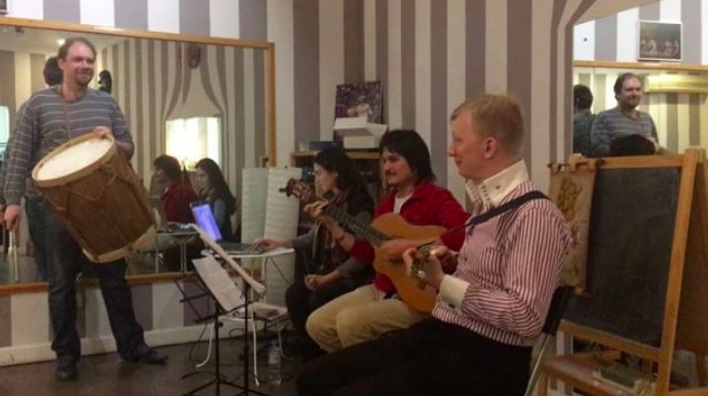
This year, for the first time since its inception, the SADEM “Escuela Popular de Música” incorporated new courses of study into their curriculum. Musician Armando De la Vega, the Institute Head of Studies points out that “Tango” and “Jazz” are the most popular ones. The course held by the ISMP (Instituto Superior de Música Popular), dependent on SADEM, is a higher education course. Students attend 4 times a week for approximately 3 years (the course is however divided into “phases” rather than confined by time frames) to finally attain the degree of “Higher Performer of Traditional Music”. The monthly fee is in the order of $250 and applicants must previously sit for an admission test, which guarantees a certain technical level among the newcomers. According to De la Vega, “we’re guided by the principle that all professors, except for those in humanities, must be working musicians. It’s almost an ideological standard.
In general, kids coming in don’t really know the genre. But when they start performing tango they realize that the stuff they usually hear, the most widely spread tango is not necessarily the best. Our teaching is flexibility-focused. We don’t want them to think ‘well, so this is all there is’. If they can also learn Al Di Meola and Grela, so much the better”.
The Escuela Argentina de Tango operates at several venues: Centro Cultural Torquato Tasso, Centro Cultural Borges, and Teatro de la Comedia. Principal Octavio Maroglio comments that from 800 to 1,000 students attend those venues every week. Since 2002 they have been teaching tango instruments, singing and dance. There is a $15 minimum monthly fee for the group classes. “From the academic point of view, we focus on the icons of each tango style, but don’t impose an academic line. Our faculty members come from diverse schools. We don’t intend to have a single line of study.” Some of the Escuela professors are Néstor Marconi, Héctor Mele, Pablo Agri, Leonardo Marconi, Nicolás Ledesma, Aníbal Arias, Analía Rego, Sergio Rivas and Oscar Ferrari. “We have many attendants in their 20’s, early 30’s. And then come those in their 40’s, early 50’s: men and women that grew up listening to rock and now want to approach tango. For example, a 55-year-old Uruguayan doctor came to Buenos Aires to learn how to play the bandoneón”. In turn, the Escuela holds a seminar called the “Seminario Tango Industria Turístico Cultural”, aimed at students of tourism.
Shaping Tango professionals
The final stop in our school tour is Collegium Musicum (located on República Dominicana -formerly Charcas- 3492), a center that had traditionally concentrated on children’s music teaching. But in 2004 the Collegium incorporated a Tango School. Principal Gabriel Menéndez points out that “we don’t intend our students to just learn an instrument (the Collegium teaches not only the traditional tango instruments but also sax, flute and clarinet), we want them to specialize in a style. We aim at shaping professionals, providing students with performing aptitudes, so that when they graduate they’re ready for work, be that in an orchestra, accompanying a performer or in a duet or a trio. That is why we don’t offer any subject like “music reading”, we expect our applicants to know how to do that”. The Collegium course is held in individual classes and extends for at least a 2 year period of time. The monthly fee varies from $105 to $120. The syllabus also comprises intensive classes for foreign students.
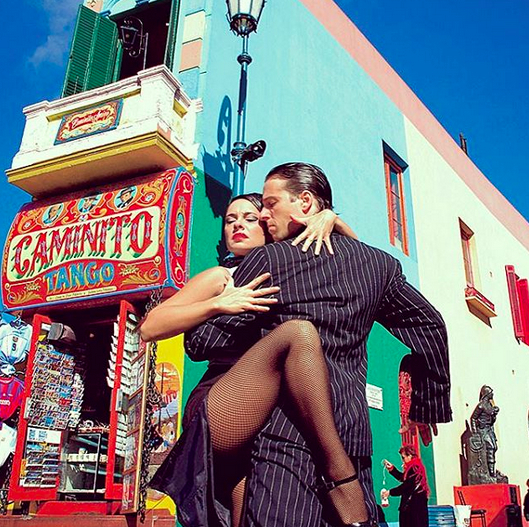
The majority of the musicians and teachers in the poll consider diversity to be enriching (many of the current generation performers had only one choice in their time: the Escuela de Música Popular de Avellaneda). However, some fear that in this “academic market” frenzy, excellence might wind up impaired. In about 10 years, the effects and scope of this increasing interest in teaching and learning tango will be revealed.
